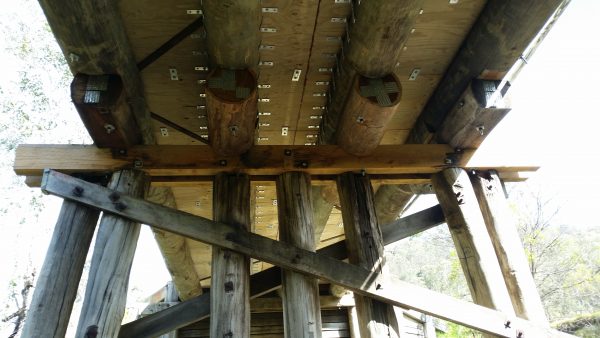Building bridges after bushfires
Recent bushfires burnt over 18.6 million hectares across the country[1]. Its path of destruction has left towns desperately trying to pick up the pieces of their communities.
Homes, buildings and infrastructure are now beginning to be rebuild and for many regional towns, bridges are the only ways in or out of the community. When a bridge has been damaged, the impact on the local community can be significant, particularly if the bridge is one of only a handful of access points connecting the region.

Bridges form a vital part of Australia’s transport network, with around 30,000 timber road bridges in service throughout the country. However, due to heavier and faster moving vehicles and more recently, damage by bushfires, many of these ageing timber structures have deteriorated or damaged beyond repair and councils are needing to look at ways to reconstruct the infrastructure with a time and budget effective solution.
As a way to extend the life of existing timber bridges or build replacement bridges, Big River Group has developed an engineered timber system consisting of bridge decking, girders, headstocks and corbels along with many other engineered sections that replace existing timbers size for size, a structural grade engineered plywood bridge deck system which acts as an alternative to steel and concrete decks being less expensive, faster to install, and a critical measure of success for those locations who are lacking council funding and are needing a quick response.
The system is an engineered substitute for traditional hardwood decking and is manufactured to AS/NZS 2269-2008 from sustainable Australian plantation pine.
The key feature is the fact it is manufactured in continuous lengths to the full width of a bridge, hence providing excellent load distribution usinng the full structure and extensively extending the life of existing structures when used as a deck replacement. When the full engineered system is used with the combination of Engineered LVL: girders, headstocks and corbels etc this delivers a full Bridge system that complies with loadings and AS:5100 T44 deflection limits as well as M1600.
As a retrofit solution that can help extend the life of timber bridges by decades, Bridge ply, offers a low-cost option for rehabilitating existing, older timber structures without needing to replace the entire bridge – meaning only components that are failing need to be replaced, saving time and material costs. Cedar Creek Bridge, in the Hunter region of New South Wales, was restored in three days – four days ahead of deadline, with council contracting two work crews around-the-clock to complete the job quickly.
Providing a time efficient solution due to its lightweight feature, Bridge ply can be moved in large sections with the same machinery used for alternative materials, so less trucks are required for delivery and less crane movement is needed in order to connect the components. Additionally, as a timber-based product, most of the machinery alterations, can be done on site with hand tools, such as drilling.
For more information visit: www.bigrivergroup.com.au/product/structural-plywood-bridge-decking/
